The Wright Brothers Book: 10 Incredible Lessons That Will Inspire Your Imagination
When one thinks of human ingenuity and the power of perseverance, The Wright Brothers Book by David McCullough instantly comes to mind. This meticulously researched biography tells the fascinating story of Wilbur and Orville Wright, two brothers from Dayton, Ohio, who defied the odds and changed the course of history by inventing powered flight.
McCullough captures not only the technical genius of these pioneers but also their unwavering determination, teamwork, and ability to overcome societal skepticism. In this post, we delve deep into The Wright Brothers Book, exploring the life, challenges, and triumphs of these legendary innovators.
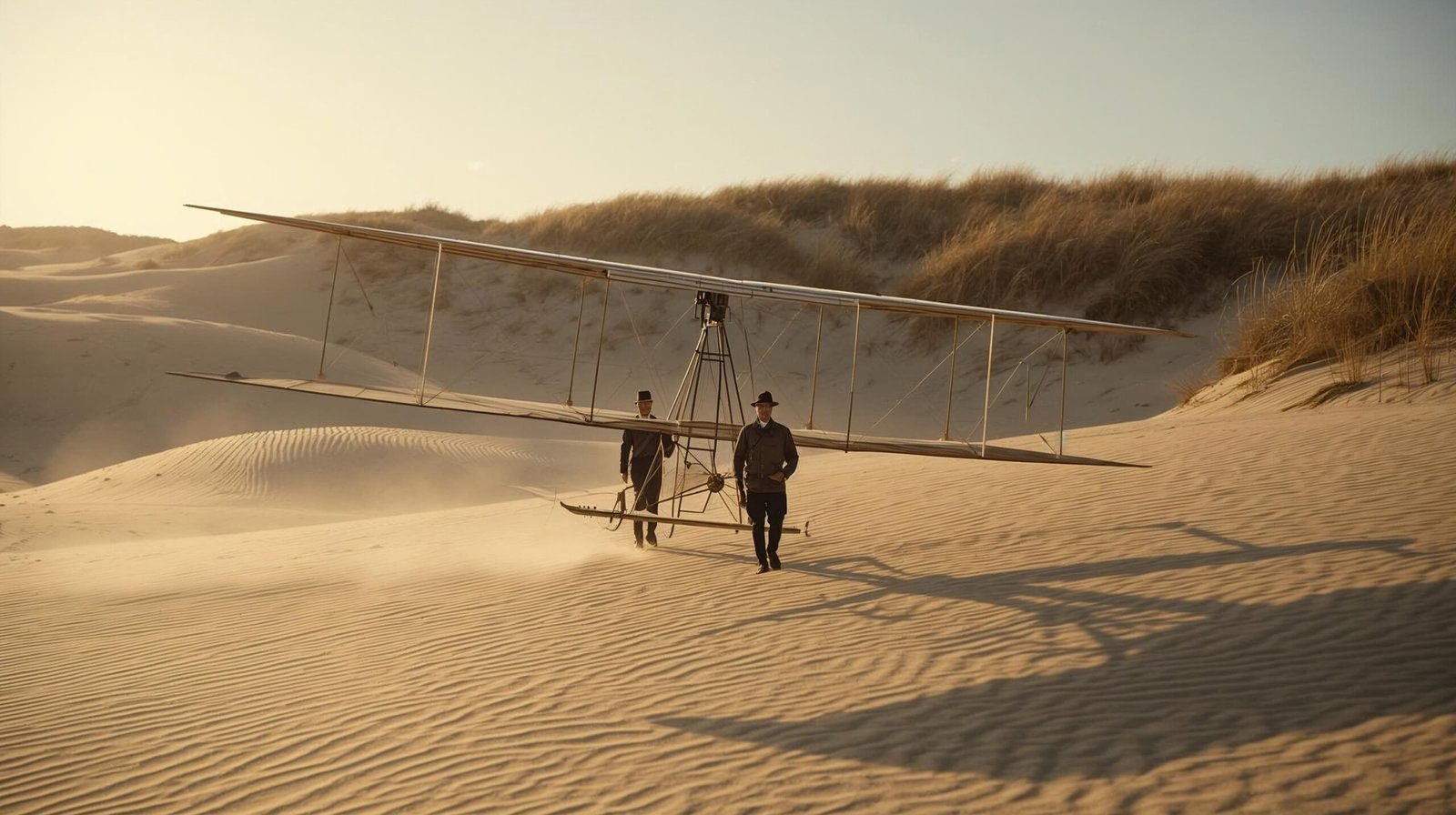
1. The Early Life of the Wright Brothers
The story of the Wright brothers begins in Dayton, Ohio, in the late 19th century. Wilbur, born in 1867, and Orville, in 1871, grew up in a household that encouraged curiosity, learning, and creativity. Their father, Milton Wright, was a bishop who valued education and critical thinking.
McCullough’s The Wright Brothers Book highlights how these early influences laid the foundation for their lifelong pursuit of knowledge. The brothers were not academically exceptional in a conventional sense but were fiercely curious and mechanically gifted, qualities that would later define their revolutionary work in aviation.
2. Curiosity and Innovation: A Childhood Spark
One of the most compelling aspects of The Wright Brothers Book is the portrayal of how curiosity fuels innovation. The Wright brothers were fascinated by flight from an early age, inspired by a toy helicopter their father gave them.
This early spark demonstrates that innovation often begins with simple curiosity. McCullough emphasizes that their success was not just about technical ability but also about relentless experimentation, careful observation, and creative problem-solving.
3. The First Steps Toward Flight
By the 1890s, the Wright brothers had turned their curiosity into serious experimentation. They began studying aerodynamics, reading works by earlier pioneers such as Otto Lilienthal and Octave Chanute.
The Wright Brothers Book explains in detail how Wilbur and Orville meticulously tested gliders, analyzed wind conditions, and recorded every result. Their approach combined practical experimentation with theoretical knowledge—a methodology that modern innovators continue to emulate.
4. Overcoming Skepticism and Doubt
No great achievement comes without doubt and criticism. The Wright brothers faced significant skepticism from the scientific community, press, and general public. Many people believed that human flight was impossible.
McCullough’s narrative in The Wright Brothers Book illustrates how they overcame these challenges with patience and resilience. They understood that belief in oneself, paired with meticulous planning and execution, was essential to turning visionary ideas into reality.
5. The Importance of Collaboration
While the Wright brothers are often seen as individual geniuses, The Wright Brothers Book emphasizes their collaborative spirit. Wilbur and Orville complemented each other perfectly: Wilbur was more methodical and analytical, while Orville was inventive and practical.
Their partnership exemplifies how teamwork can magnify individual strengths and compensate for weaknesses—a lesson applicable far beyond aviation.
6. Breakthroughs in Aerodynamics
A key element of The Wright Brothers Book is the brothers’ understanding of aerodynamics. They discovered the importance of wing shape, control surfaces, and the delicate balance required for sustained flight.
Through tireless glider experiments and wind tunnel tests, they developed control mechanisms that allowed the pilot to maneuver the aircraft effectively. These breakthroughs laid the foundation for modern aviation, proving that careful experimentation and data-driven approaches yield transformative results.
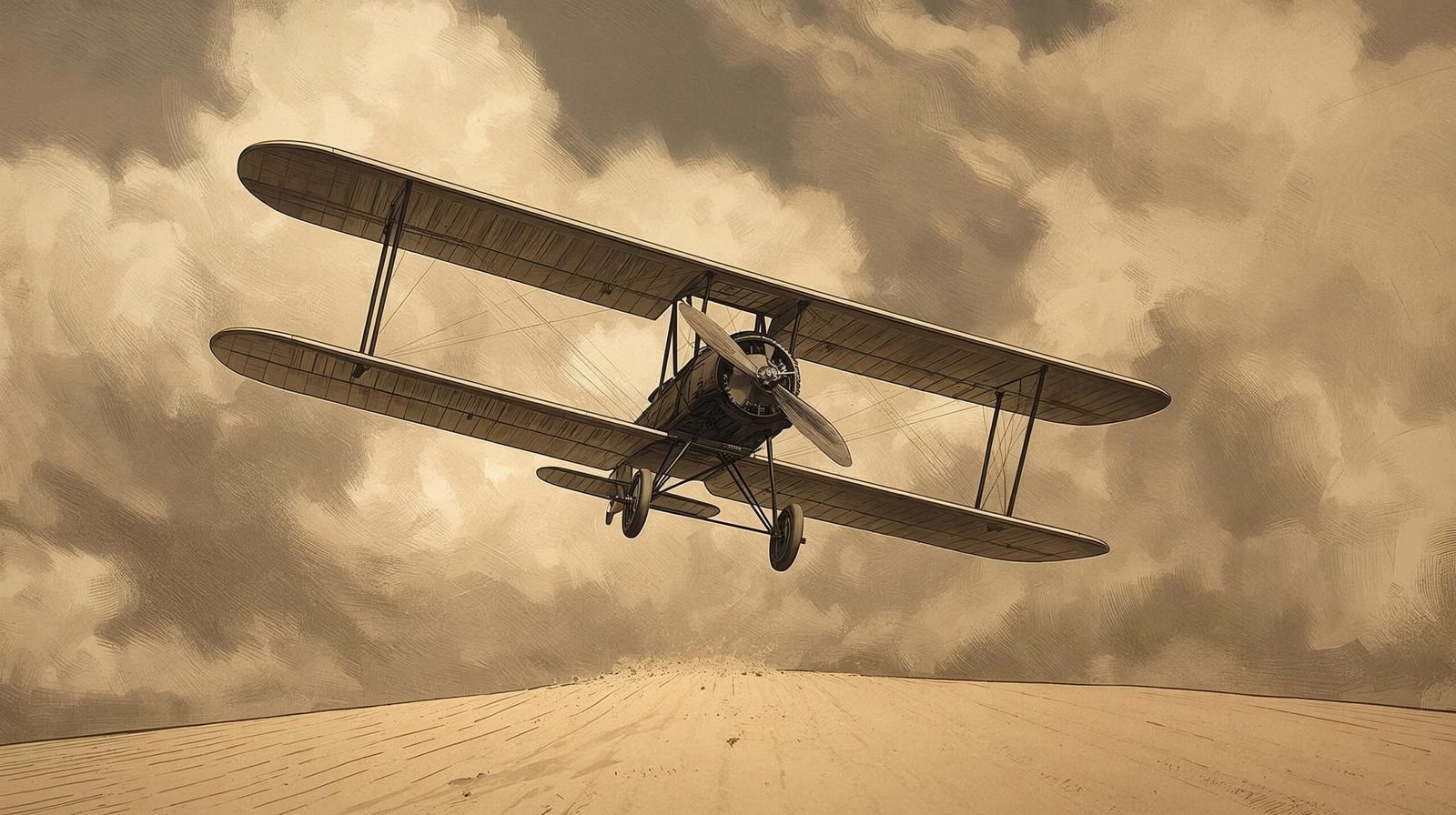
7. The Historic Flight at Kitty Hawk
On December 17, 1903, the Wright brothers achieved what many deemed impossible. At Kitty Hawk, North Carolina, they completed the first powered, controlled, and sustained flight.
The Wright Brothers Book vividly describes this historic moment, capturing the tension, excitement, and eventual triumph. Orville’s first flight lasted only 12 seconds, but it marked a pivotal moment in human history, demonstrating the limitless potential of innovation when coupled with determination.
8. Perseverance in the Face of Setbacks
Even after their initial success, the Wright brothers faced numerous setbacks. Technical failures, funding challenges, and public skepticism continued to test their resolve.
McCullough’s account in The Wright Brothers Book underscores that perseverance is as crucial as talent. The brothers’ willingness to refine their designs, learn from mistakes, and continue pushing forward is a universal lesson for anyone striving to achieve extraordinary goals.
9. Legacy of the Wright Brothers
The Wright brothers’ contributions extend far beyond their initial flights. Their innovations transformed transportation, warfare, and global connectivity. McCullough’s The Wright Brothers Book situates their achievements within a broader historical context, illustrating how two determined individuals can reshape the world.
Today, the Wright brothers serve as symbols of human ingenuity, courage, and the power of dreaming big. Their story continues to inspire engineers, entrepreneurs, and dreamers across the globe.
10. Lessons for Modern Innovators
The Wright Brothers Book is not just a historical account; it is a guide for aspiring innovators. Some of the key lessons include:
-
Curiosity is the seed of innovation.
-
Persistence can overcome societal skepticism.
-
Teamwork amplifies individual strengths.
-
Experimentation and observation are critical.
-
Small incremental improvements lead to monumental breakthroughs.
By studying their journey, modern innovators can gain insights into problem-solving, resilience, and creative thinking.
11. The Bicycle Shop and Its Hidden Lessons
Before achieving flight, the Wright brothers ran a small bicycle shop in Dayton. McCullough notes in The Wright Brothers Book that this modest venture was crucial to their eventual success. Repairing bicycles taught them mechanical precision, balance, and problem-solving skills.
Every bicycle frame, every gear adjustment, and every wheel alignment contributed to their understanding of mechanics and control—principles directly applicable to flight. In a way, the humble bicycle shop became an incubator for their larger, world-changing invention. The discipline they cultivated here—testing, observing, refining—would later allow them to overcome seemingly insurmountable challenges in aviation.
12. The Role of Mentors and Influences
While the Wright brothers were largely self-taught, they were not isolated. McCullough’s The Wright Brothers Book highlights the influence of mentors and previous pioneers, such as Otto Lilienthal, Octave Chanute, and Samuel Langley.
Chanute, an engineer and aviation enthusiast, provided advice and encouragement, sharing technical papers and insights that helped the Wright brothers refine their approach. Even setbacks faced by predecessors became valuable lessons for the Wrights, demonstrating the importance of learning from history. The brothers’ ability to combine independent thinking with external guidance is a key lesson in intellectual humility and collaboration.
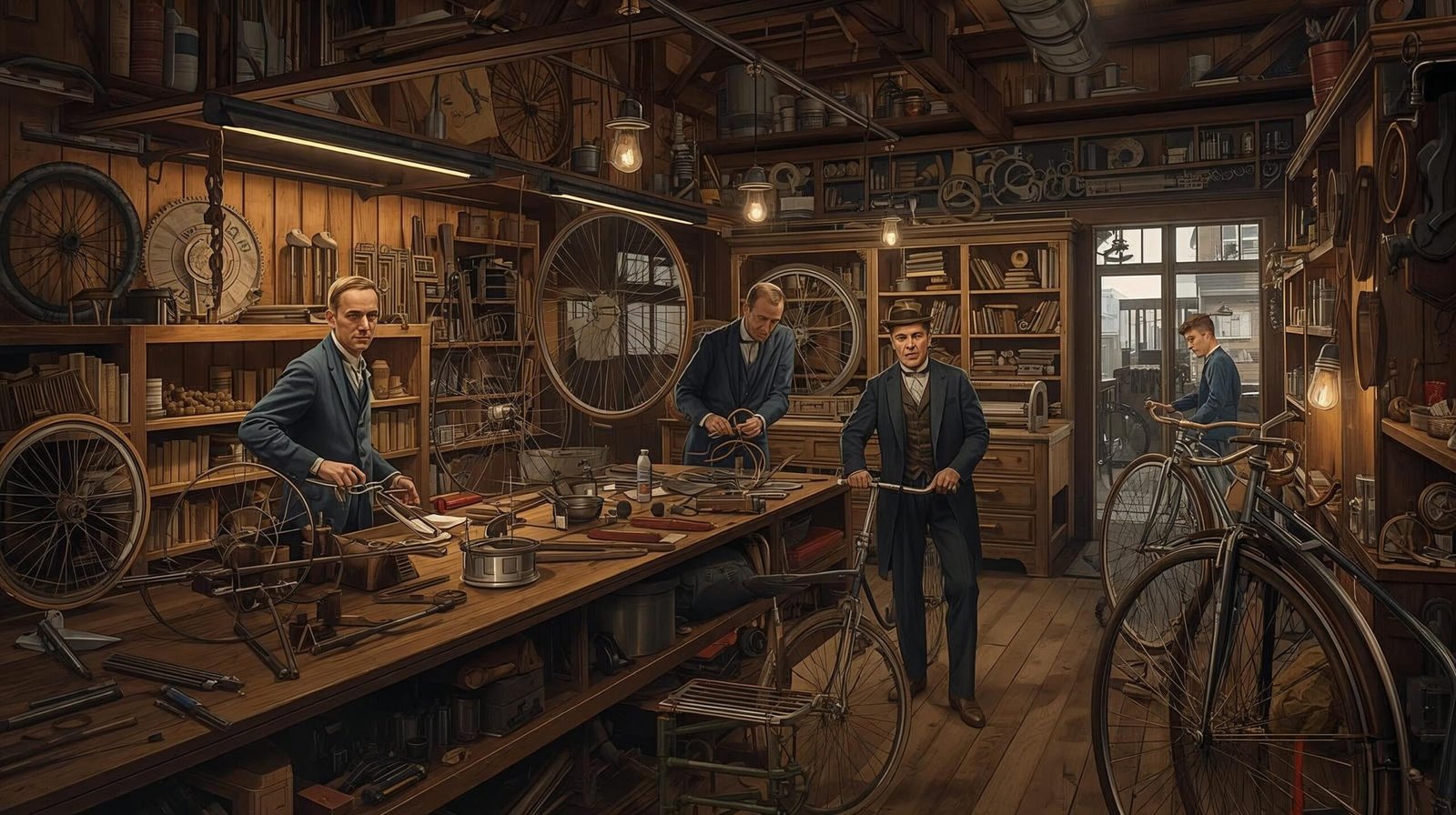
13. Experimentation at Kitty Hawk
The choice of Kitty Hawk, North Carolina, for flight experiments was deliberate. Its steady winds and remote location allowed for consistent glider testing without interference from crowds. McCullough’s The Wright Brothers Book vividly describes the harsh conditions: sandstorms, biting winds, and unpredictable weather tested both resolve and ingenuity.
Despite these hardships, the brothers meticulously documented every flight. Each glider trial provided data on lift, drag, and control, eventually culminating in the first powered flight. This careful, methodical experimentation underscores the value of patience and persistence in innovation.
14. Family Support and Sacrifice
Family played an indispensable role in the Wright brothers’ journey. Their mother, Susan Koerner Wright, was mechanically gifted and encouraged experimentation, while their father provided a nurturing yet disciplined environment.
McCullough emphasizes in The Wright Brothers Book how personal sacrifice underpinned their professional achievements. Both Wilbur and Orville devoted years to experimentation, often risking financial stability and personal comfort. This balance of family grounding and personal dedication was essential to their eventual success.
15. Facing Skepticism in the Media
Even after achieving flight, the Wright brothers encountered skepticism from the press and scientific community. Many newspapers dismissed their claims, while established scientists doubted the feasibility of controlled powered flight.
The Wright Brothers Book illustrates the brothers’ resilience in the face of public doubt. Instead of seeking immediate validation, they continued refining their designs quietly, understanding that true innovation often attracts disbelief before admiration. Their story encourages modern innovators to focus on work and results rather than temporary criticism.
16. Lessons in Patience and Timing
A recurring theme in The Wright Brothers Book is patience. The brothers waited for the right conditions, experimented repeatedly, and refused shortcuts.
Their story teaches that breakthroughs rarely happen overnight. Strategic timing, careful preparation, and incremental progress are often more important than speed. Wilbur and Orville understood that rushing experiments could jeopardize both safety and long-term success—a lesson applicable to entrepreneurs, engineers, and creators in any field.
17. The Global Impact of the Wright Brothers
The invention of powered flight transformed the world. McCullough notes in The Wright Brothers Book how aviation reshaped commerce, warfare, and international relations.
Beyond technical achievement, the brothers inspired generations of inventors, pilots, and engineers. They showed that innovation is not only about building a machine but also about envisioning its potential to transform society. Their journey underscores the broader influence of creativity, courage, and persistence on human progress.
18. Personal Reflections and Character Traits
The Wright Brothers Book delves into the personal traits that made Wilbur and Orville exceptional. Their humility, meticulous attention to detail, and ability to handle criticism were as important as their mechanical genius.
McCullough emphasizes how their characters shaped their success: a combination of discipline, curiosity, and empathy allowed them to collaborate effectively, endure challenges, and remain focused on their ultimate goal. These lessons remain timeless for anyone pursuing ambitious projects.
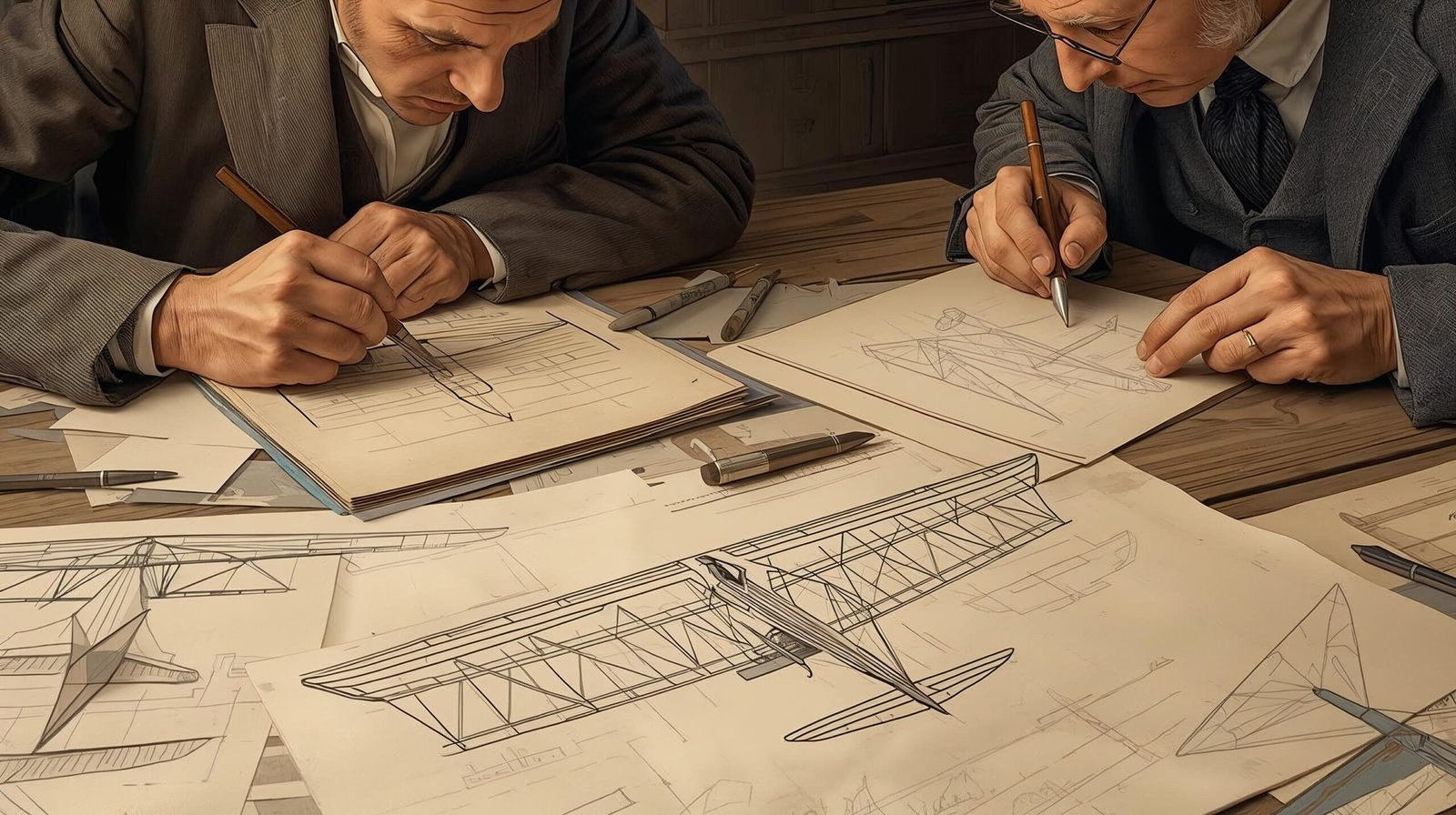
19. Recognition and Legacy
Though initially met with skepticism, the Wright brothers eventually received global recognition. McCullough recounts how governments, academic institutions, and aviation enthusiasts celebrated their achievements.
Their legacy, as detailed in The Wright Brothers Book, goes beyond historical records—it’s a continuous inspiration for innovation and creativity. Museums, memorials, and educational programs around the world honor their contributions, ensuring that their story remains a beacon for future generations.
20. How The Wright Brothers Book Inspires Today
Finally, The Wright Brothers Book is not only a historical account but also a source of inspiration. Modern readers gain insight into problem-solving, strategic thinking, and resilience.
McCullough’s storytelling reminds us that even ordinary individuals, when equipped with curiosity, dedication, and vision, can achieve extraordinary feats. The Wright brothers’ journey demonstrates that persistence, teamwork, and careful experimentation can turn dreams into reality.
Whether you are an aspiring engineer, entrepreneur, or innovator, this book offers lessons that transcend time and profession, urging us to pursue our goals with courage and meticulous effort.
21. The Wright Brothers’ Experimental Philosophy
One of the most remarkable aspects of their journey was the brothers’ experimental approach. They treated failure not as a setback but as a learning opportunity. Each flight, each mechanical adjustment, and each observation contributed to a deeper understanding of aerodynamics and control. This iterative process became a blueprint for modern engineering practices.
Their meticulous note-taking and precise measurements allowed them to compare results systematically. Unlike many inventors who relied purely on intuition, the brothers embraced a scientific approach—combining theory with practical experimentation. Their commitment to documenting even minor observations ensured that progress was steady and measurable.
22. Engineering Challenges and Ingenuity
The invention of the first powered aircraft required solving problems that had never been tackled before. The Wrights had to understand lift, drag, thrust, and stability in ways that the scientific community of their time had only partially explored.
They built wind tunnels to test airfoils and experimented with different materials to optimize weight and strength. The combination of creativity and rigorous engineering allowed them to develop solutions that were both innovative and practical. These experiments highlight the importance of combining imagination with disciplined analysis when addressing complex problems.
23. The Influence of Environment and Geography
The Wright brothers’ choice of testing locations was strategic. They selected sites with consistent winds and open spaces, understanding that environmental factors could significantly affect flight outcomes. This careful attention to context demonstrates that innovation is not just about ideas and technology—it is also about understanding the surrounding conditions and adapting strategies accordingly.
By studying the wind patterns, terrain, and weather conditions, they were able to refine their designs more effectively. The remote sites also provided privacy, allowing them to test freely without distraction or interference. This balance of technical experimentation and environmental awareness contributed to their historic success.
24. The Human Dimension of Aviation
Beyond the mechanical achievements, the story of these pioneering flights is also deeply human. The brothers displayed extraordinary patience, courage, and resilience. They faced criticism, endured harsh weather, and dealt with moments of doubt, yet they continued working tirelessly toward their goal.
Their story reminds readers that every groundbreaking invention is ultimately a human endeavor. It is shaped by determination, collaboration, emotional resilience, and the willingness to take risks. By examining their lives, we gain insight into the qualities that enable extraordinary achievements.
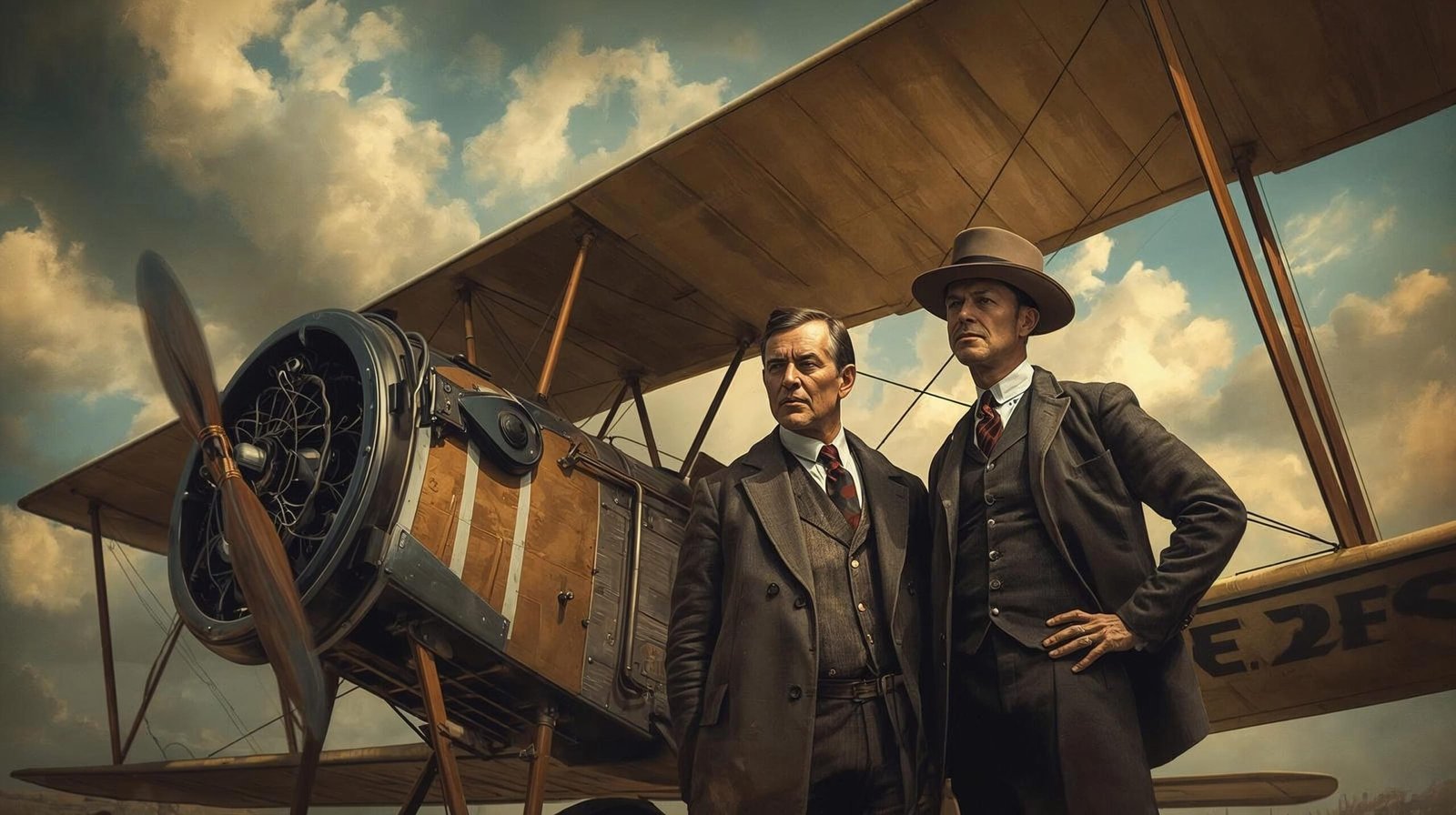
25. Lasting Lessons for Innovation and Society
The impact of their work extended far beyond the immediate invention. It set the stage for modern aviation, global connectivity, and the rapid spread of ideas across continents. Their achievements illustrate that individual curiosity, combined with systematic effort, can lead to advancements that transform society.
Their journey emphasizes the importance of mentorship, collaboration, and learning from prior experiments. It also demonstrates that revolutionary ideas often require years of unseen labor before achieving public recognition. Modern innovators and students alike can draw inspiration from this example, understanding that persistence, observation, and dedication are essential components of success.
FAQs About The Wright Brothers Book
Q1: Who wrote The Wright Brothers Book?
A: The book was authored by David McCullough, a two-time Pulitzer Prize-winning historian.
Q2: What is the main focus of the book?
A: The book focuses on the lives of Wilbur and Orville Wright, detailing their journey to invent the first powered flight and their legacy in aviation history.
Q3: Is The Wright Brothers Book suitable for students?
A: Yes, it is highly recommended for students and anyone interested in history, innovation, or aviation, as it offers detailed accounts and inspirational lessons.
Q4: How does the book describe the challenges faced by the Wright brothers?
A: The book illustrates numerous challenges including societal skepticism, technical difficulties, and financial constraints, showing how the brothers overcame them with persistence and innovation.
Q5: What can readers learn from the Wright brothers’ story?
A: Readers can learn the value of curiosity, perseverance, teamwork, and experimentation in achieving groundbreaking success.
Conclusion
In conclusion, The Wright Brothers Book by David McCullough is more than a biography; it is a source of inspiration, a lesson in resilience, and a masterclass in innovation. From their humble beginnings in Dayton to the historic flight at Kitty Hawk, Wilbur and Orville Wright exemplify how curiosity, determination, and collaboration can redefine the boundaries of possibility.
For anyone seeking to understand the essence of human ingenuity, The Wright Brothers Book is a must-read. It encourages us to dream boldly, experiment relentlessly, and believe in the power of perseverance.
Explore this masterpiece and many more insightful reviews at shubhanshuinsights.com, where every story opens a world of inspiration and knowledge. Share your thoughts in the comments—how does the story of the Wright brothers inspire your journey?
Continue exploring inspiring stories and timeless lessons at shubhanshuinsights.com, where curiosity, knowledge, and innovation come together to transform your perspective.